How Amanda Gunawan Ushered a 1920s Factory Loft Into Its New Era
Translation missing: en.blogs.article.author_on_date_html
Living
How Amanda Gunawan Ushered a 1920s Factory Loft Into Its New Era
September 12, 2022
Technical and theoretical as design may be, at the end of the day—if done well—it’s driven by a feeling. A concept architectural designer Amanda Gunawan is both keenly aware of and masterful in its practice—seen particularly well displayed in her studio’s recent project at DTLA’s Biscuit Lofts. We were lucky enough to step inside the space to chat with Amanda about the principles that guide her to create such tranquil and transportive interiors, and we left with a wealth of lessons worth embodying in any home. Read on below, and then tune into her episode of Details Matter, here.
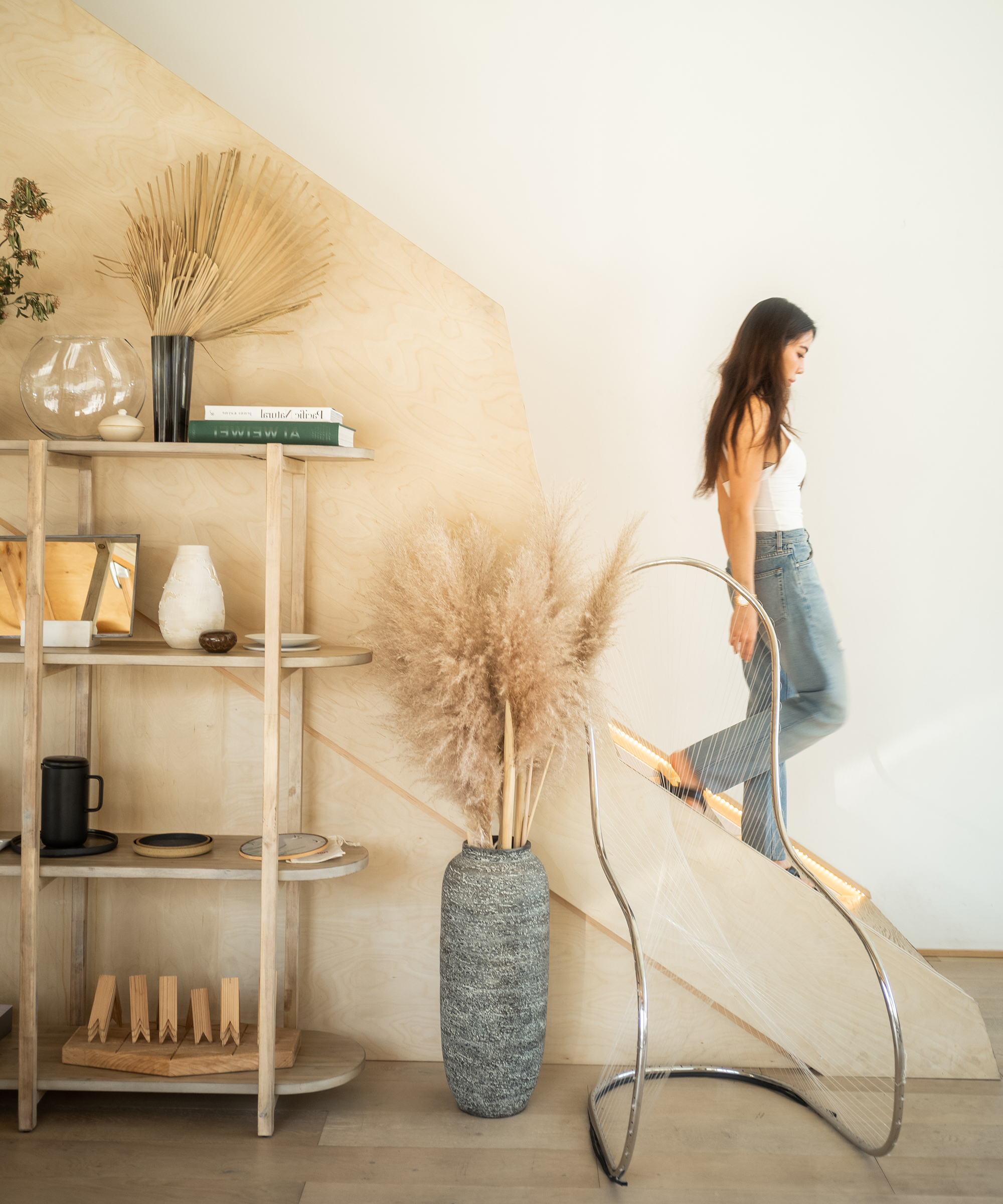
How Amanda Gunawan Ushered a 1920s Factory Loft Into Its New Era
Rip & Tan: Tell us more about the acronymous origins of your studio’s name—what does “The Only Way Is Up” mean for you personally? How does it guide your ethos as a design team?
Amanda Gunawan: The only way up embodies a life principle in which I aim to operate my life in. The word “up” is both ambiguous and specific at the same time. As with the word “progress”, it can mean so many different things to so many different people. “Up” or “progress” to me, is not always considered from a pragmatic/ conventional utilitarian perspective but rather viewing it in the form of an evolutionary process. I genuinely believe no experience is inherently good or bad, they are what you make of it. You decide on the lessons that you need to learn from that particular experience and how much of it you allow to shape your new identity and the new you. With that being said, I like to make sure to remember to always come out of an experience having changed somehow, or evolved. This is not always the case for each encounter with a life lesson but I would hope that if I were to look at it from a bird’s eye view or a macro-level perspective, I would see growth, or rather, an upward movement.
At OWIU Design, we focus on thoughtful design that emphasizes careful craftsmanship. The word thoughtful may seem antithetical or non-correlated to the word “up” but it actually very much is. In approaching our designs thoughtfully, we are very much building with the future in mind. We believe in creating spaces that are not only built to last but are built to evolve. In order to achieve this, leaving the space better than it was before but ready for growth, we have to approach it from its root—i.e. with thought as a main driving force.
Rip & Tan: Can you walk us through the design process for this particular space? Which came first—the desire for dual-use spaces and furnishings or the inspiration to embrace a functional Japanese design sensibility?
Amanda Gunawan: Whenever I approach a design project, the first step in the process is always to take into consideration the history and the past of the space itself. I analyze what I am working with and then decide what I would like to bring to the table in order to achieve my end goal, which is almost always a balanced space (unless I’m designing for a place whose goal is to create chaos and excitement).
When I first encountered Biscuit Lofts, what I saw was an industrial loft, heavy and brutal with the details, with so much history. It was a building that was built to last and I loved the structural details and straightforwardness of the space. I wanted to bring to light (pun very much intended) the natural light that pours in in the morning and leaves the space with the most beautiful golden hues as the sun sets each evening.
To answer this question—which comes first: form or function? I would say neither because I firmly believe I don’t have to choose. And more than anything, a metric that I use to measure that I have successfully completed my job, is usually characterized by a feeling rather than a look or a function, these two are merely natural by-products of the process.
Rip & Tan: Having once been home to a baked goods factory, this building’s undergone quite a transformation. What informed which elements of its history remained? Was the apartment’s design in any way influenced by the former occupants?
Amanda Gunawan: I always heavily take into account the past and history of a space and how to evolve that space into something more without simply staying in the past or converting it into something radically different, removing all traces of its history. We kept so many of the industrial elements and embraced the building’s past.
Rip & Tan: Beyond technical terms, how did you envision the finished space? What feelings were you hoping it would invoke?
Amanda Gunawan: I had my first Japanese ryokan experience in 2015 and spent the last 4 years with OWIU Design trying to engineer the perfect design formula to achieve that experience and feeling. A feeling, as intangible as it is, is totally able to be formulated via an environment. We very much design all our spaces with this particular feeling in mind. At a Japanese ryokan, to say that I felt centered, present, and calm would be an understatement. I wanted to design Biscuit Lofts so people could feel the same in that space every day of their lives.
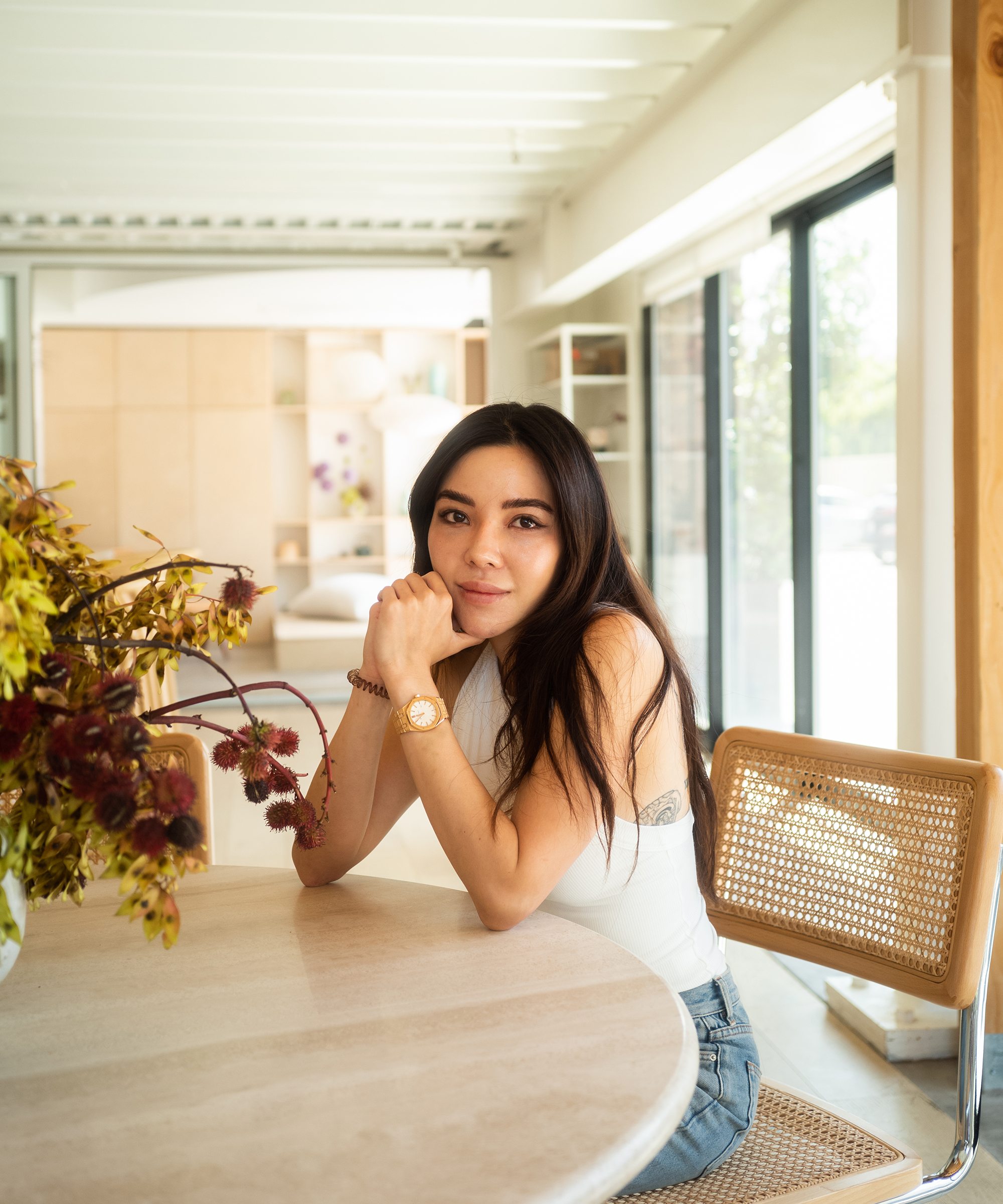
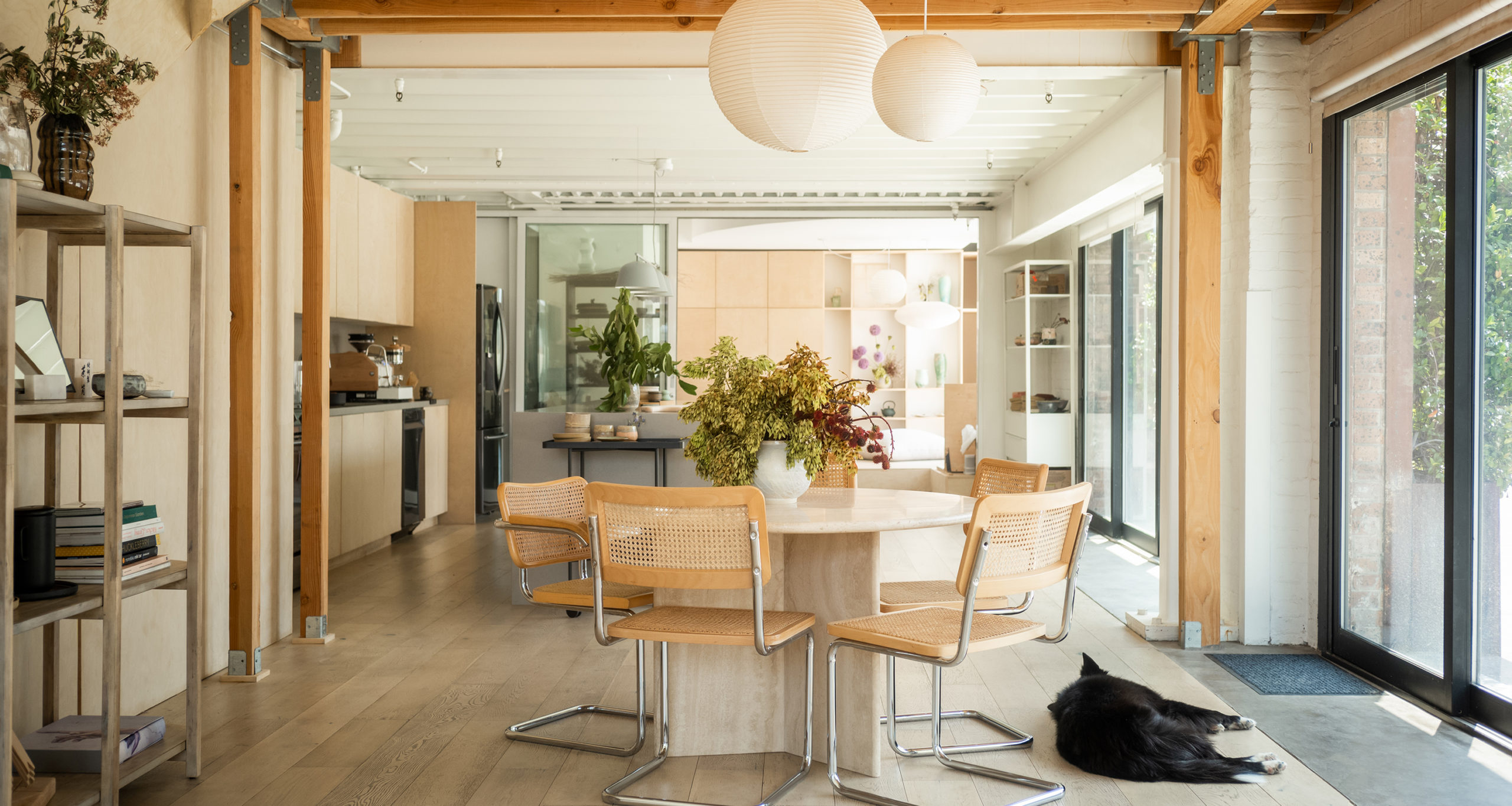
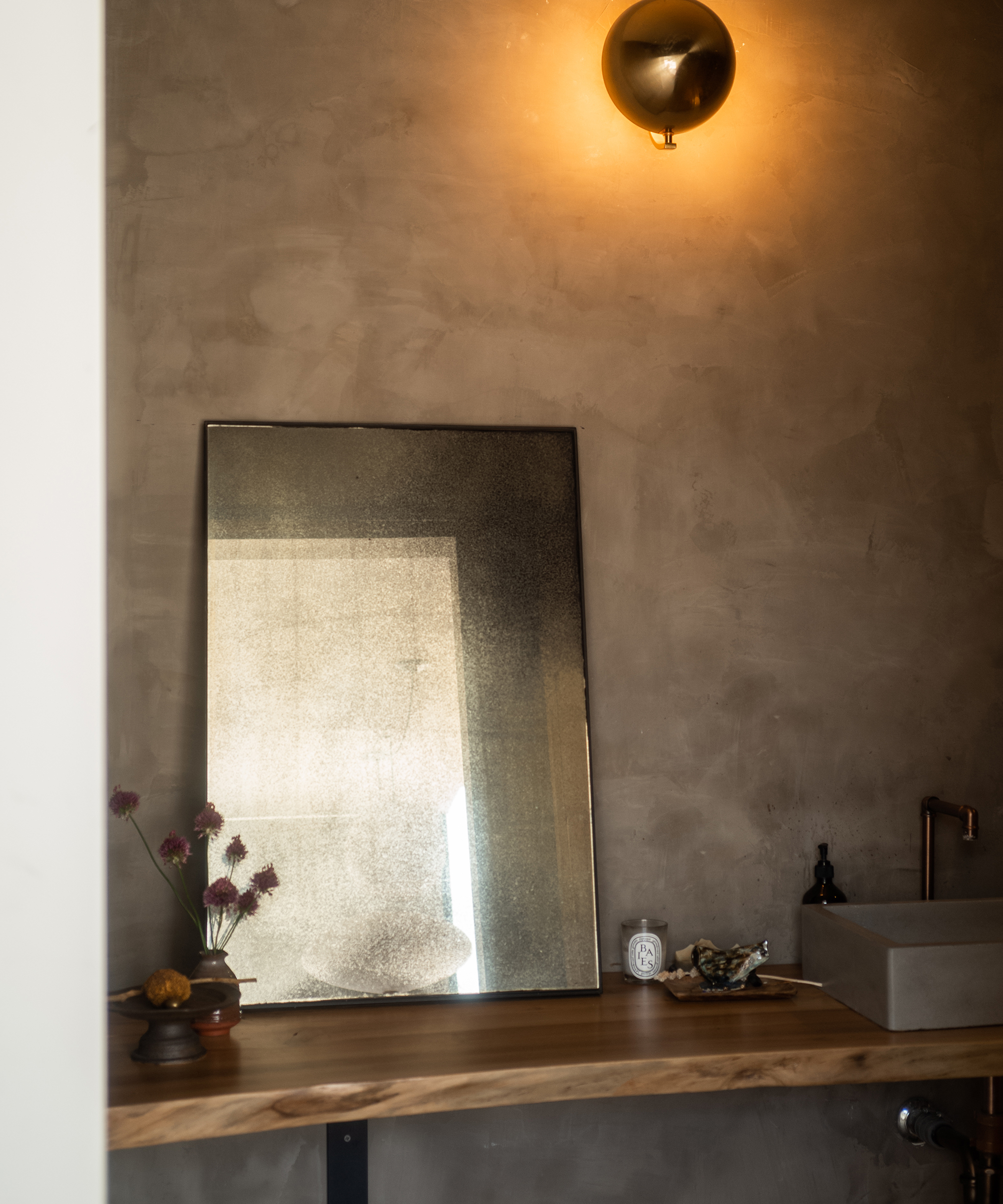
Rip & Tan: The architectural elements of this apartment are striking—particularly the staircase and accompanying guardrail. What inspired this impressive installation?
Amanda Gunawan: I wanted to unify the space. It was important that the space would feel cohesive and whole. We wanted to create unique elements and test out new methods of fabrication without having the element be the center of attention, it still needed to belong and feel part of the space thus the technique of creating a geometry that would blend into the rest of the space as well as the material choice was employed.
Rip & Tan: What are your thoughts on minimalism in design as it pertains to mindfulness? Is there such a thing as mindfulness in a maximalist design?
Amanda Gunawan: People often view minimalism as having less, but the way I view minimalism is that it leaves space for possibilities. In my opinion, neither minimalism nor maximalism has a direct correlation to mindfulness. Mindfulness is rooted in presence, thought, and intention. As long as you approach either one (minimalism or maximalism) with those principles in mind then I would argue that you are being mindful.
Rip & Tan: With a minimalist approach, it becomes so clear that the materials you use matter. How did you go about selecting the textures and finishes in this space?
Amanda Gunawan: The existing space was an industrial loft and had very heavy, brute elements. I needed to neutralize this and chose a material palette that was the opposite of the existing one and would do exactly that.
Rip & Tan: Do you have any advice for adding décor into a space in a way that feels purposeful and lasting?
Amanda Gunawan: I would say it always starts with thought. It’s about self-awareness and knowing yourself and how you interact with and use your space. Forget the Pinterest boards and Instagram posts—do you. Really think about what you like, what you don’t like, how you want to feel in the space, and how you want to use it. Think of that particular space as a canvas and you’re the artist, painting a portrait that needs to represent you.
At the end of the day, you want the whole art piece to be cohesive and to read as a whole. You also want to be able to self-identify with the art piece. So you should not get something that would completely stand out and wreck the composition of the art piece or disrupt the flow of the space. When you’re designing a space, balance is what is sustainable.
Rip & Tan: How do you define timeless design? Are there any design practices or trends you’d caution against?
Amanda Gunawan: I would caution everyone against the word “trends” in the first place. With the rapid spread of information through social media, we are being exposed to and absorbing so many different things each day. There are so many “trends” circulating, which is great when you treat this as inspiration or knowledge but not so much when it is starting to cloud your identity. You start to think that you like something because you see it so much, jump on the bandwagon, and then realize much later that it’s not you. Again, the solution to this is to be mindful. Ask yourself truly if it fits into the vision you have for the space or how you want to use it.
Rip & Tan: What does living well mean to you?
Amanda Gunawan: Living well is having a sustainable, working system where nothing is lacking or excessive. Everyone has different interpretations and versions of this sustainable system and in order for us to know what this looks like, we first need to really get to know ourselves: our past, our goals, our fears, our strengths, and weaknesses, and what makes us happy and what ticks us off and so on and so forth. Once this is clear, designing a system that works will become much easier and once you have that, life will simply “flow” and that is living well to me.
"The way I view minimalism is that it leaves space for possibilities."
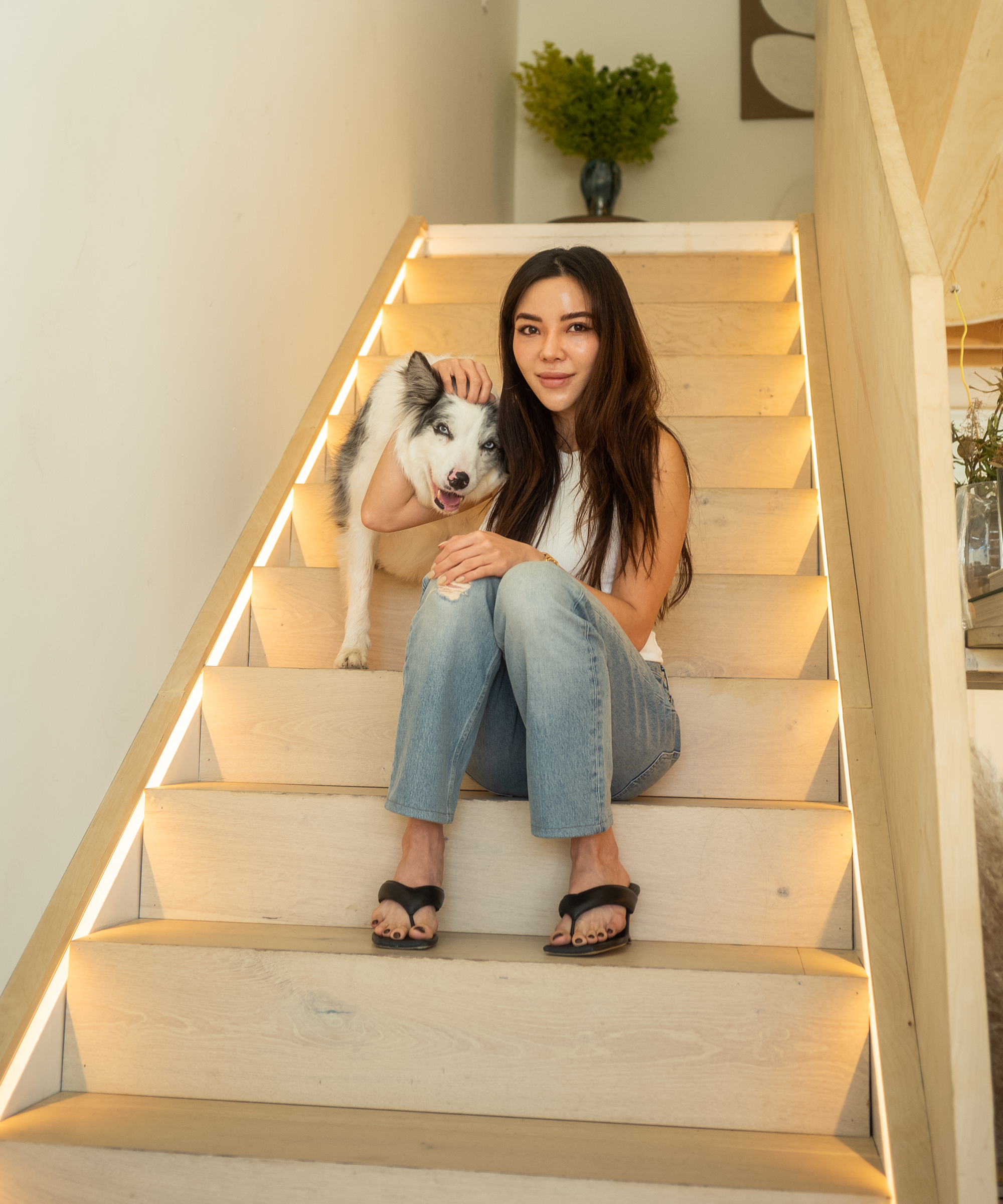
Shop the Story
Photos by Kate Berry



